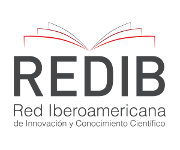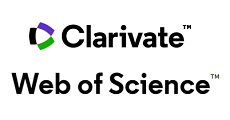
Published
Development and Validation of an Affordable Calibration Method for Surface Plates
Desarrollo y validación de un método de calibración asequible para superficies de referencia
DOI:
https://doi.org/10.15446/ing.investig.106659Keywords:
length metrology, surface plates, flatness (en)metrología de longitud, superficies de referencia, planitud (es)
Downloads
The measurement and calibration of flat surfaces is highly relevant for precision engineering, length metrology, and optical systems. Hence, many National Metrology Institutes (NMIs) tend to offer calibration services in this regard. Typically, mechanical, electromechanical, and optical measuring techniques are applied, with uncertainties in the order of micrometers. However, these techniques necessitate expensive equipment that requires periodical calibration and maintenance, which not many laboratories can afford. This work presents the validation of an affordable and simple calibration technique for surface plates through the evaluation of metrological compatibility with a reference calibration method. A surface plate was calibrated with both methods under the same conditions to validate our proposal. The 2.9 µm uncertainty obtained with the new method demonstrates its reliability and usability for laboratories with surface plates up to 300 mm in length that have a grade AA to B flatness accuracy. Due to its low initial cost, reliability, and ease of implementation, the proposed calibration method can be recommended to all laboratories and industries that need to constantly verify their surface plates.
La medición y calibración de superficies planas es de gran relevancia para la ingeniería de precisión, la metrología de longitud y los sistemas ópticos. Por lo tanto, muchos Institutos Nacionales de Metrología (NMIs) tienden a ofrecer servicios de calibración en este aspecto. Típicamente se aplican técnicas de medición mecánica, electromecánica y óptica, con incertidumbres del orden de micrómetros. Sin embargo, estas técnicas requieren de equipos costosos que necesitan calibración y mantenimiento periódicos, lo cual no es asequible para muchos laboratorios. Este trabajo presenta la validación de una técnica de calibración asequible y sencilla para placas de superficie mediante la evaluación de la compatibilidad metrológica con un método de calibración de referencia. Una placa de superficie fue calibrada con ambos métodos bajo las mismas condiciones para validar nuestra propuesta. La incertidumbre de 2.9 µm obtenida con el nuevo método demuestra su fiabilidad y usabilidad para laboratorios con placas de superficie de hasta 300 mm de longitud que tienen una precisión de planitud de grado AA a B. Debido a su bajo costo inicial, fiabilidad y facilidad de implementación, se puede recomendar el método de calibración propuesto a todos los laboratorios e industrias que necesiten verificar constantemente sus placas de superficie.
References
Ali, S. H., and Buajarern, J. (2013, Dec). New measurement method and uncertainty estimation for plate dimensions and surface quality. Advances in Materials Science and Engineering, 2013, 1-10. Retrieved from https://doi.org/10.1155/2013/918380
ASME-B89.3.7. (2013). B89.7.3. Granite Surface Plates. ASME. Azaryan, N., Budagov, J., Gayde, J.-C., Girolamo, B. D., Glagolev, V., Lyablin, M., . . . Shirkov, G. (2017, 1). The innovative method of high accuracy interferometric calibration of the precision laser inclinometer. Physics of Particles and Nuclei Letters, 14, 112-122. Retrieved from http://link.springer.com/10.1134/S154747711701006X
DIN874-1. (2003). Geometrical product specifications (gps) - straight edges - part 1: Steel straight edges; dimensions, technical delivery conditions. DIN 874-1:2003-11, 2003.
Drescher, J. (2003). Analytical estimation of measurement uncertainty in surface plate calibration by the moody method using differential levels. Precision engineering, 27(3), 323–332. DOI: https://doi.org/10.1016/S0141-6359(03)00032-1
Ehret, G., Reinsch, H., and Schulz, M. (2019). Interferometric and deflectometric flatness metrology with nanometre measurement uncertainties for optics up to 1 metre at PTB. In S. Han, T. Yoshizawa, S. Zhang, and B. Chen (Eds.), Optical metrology and inspection for industrial applications vi (Vol. 11189, p. 1118905). SPIE. Retrieved from https://doi.org/10.1117/12.2538872
Ehret, G., Schulz, M., Fitzenreiter, A., Baier, M., Jockel, W., Stavridis, M., and Elster, C. (2011). Alignment methods for ultraprecise deflectometric flatness metrology. In P. H. Lehmann, W. Osten, and K. Gastinger (Eds.), Optical measurement systems for industrial inspection vii (Vol. 8082, p. 808213). SPIE. Retrieved from https://doi.org/10.1117/12.889325
Espinosa, O. C., Diaz, P., Baca, M. C., Allison, B. N., and Shilling, K. M. (2008). Comparison of calibration methods for a surface plate. (Tech. Rep.). Sandia National Lab.(SNL-NM), Albuquerque, NM (United States).
Geckeler, R. D., Schumann, M., Just, A., Krause, M., Lassila, A., and Heikkinen, V. (2022, feb). A comparison of traceable spatial angle autocollimator calibrations performed by ptb and vtt mikes. Metrologia, 59(2), 024002. Retrieved from https://dx.doi.org/10.1088/1681-7575/ac42b9
given i=K., f., given=Kouyu. (n.d.). On a method for measuring flatness by two-point connecting method. , 8(30), 274–280. Retrieved from http://dx.doi.org/10.1299/jsme1958.8.274
Glubokov, A., Glubokova, S., Afonina, I., Zelensky, A., and Semenishchev, E. A. (2022, 12). Automated measuring system for straightness and flatness deviations of extended surfaces. Optical Metrology and Inspection for Industrial Applications IX. Retrieved from http://dx.doi.org/10.1117/12.2646259
Gromczak, K., G˛aska, A., Kowalski, M., Ostrowska, K., Sładek, J., Gruza, M., and G˛aska, P. (2016, dec). Determination of validation threshold for coordinate measuring methods using a metrological compatibility model. Measurement Science and Technology, 28(1), 015010. Retrieved from https://dx.doi.org/10.1088/1361-6501/28/1/015010
Gusel, A., Acko, B., and Sostar, A. (2000a). Assuring the traceability of electronic levels for calibration of granite surface plates. In Proc. x vi imeko world congress.
Gusel, A., Acko, B., and Sostar, A. (2000b). Assuring the traceability of electronic levels for calibration of granite surface plates. In Proc. xvi imeko world congress.
Heikkinen, V., Byman, V., Palosuo, I., Hemming, B., and Lassila, A. (2017, 6). Interferometric 2d small angle generator for autocollimator calibration. Metrologia, 54, 253-261. Retrieved from https://iopscience.iop.org/article/10.1088/1681-7575/aa648d
Heydorn, K. (2010, Nov 01). Metrological compatibility a key issue in future accreditation. Accreditation and Quality Assurance, 15(11), 643-645. Retrieved from https://doi.org/10.1007/s00769-010-0691-8
ISO. (2006). Guide iso/cei 99 2007 vocabulaire international de métrologie concepts fondamentaux et généraux et termes associés (vim). Vocabulary, 2007(VIM), 1–150.
ISO. (2015). Statistical methods for use in proficiency testing by interlaboratory comparison. Iso 13528,, 2015.
ISO8512-2. (1990). Surface plates-part 2: Granite. ISO 8512-2, 1990.
JCGM-BIPM. (2008). Evaluation of measurement data | guide to the expression of uncertainty in measurement. Int. Organ. Stand. Geneva ISBN, 50(September), 134.
Ju HUO, M. Y., Yunhui LI. (2018).Multi-channel signal parameters joint optimization for gnss terminals. Journal of Systems Engineering and Electronics, 29(4), 844. https://dx.doi.org/10.21629/JSEE.2018.04.19. Retrieved from https://www.jseepub.com/EN/abstract/article_6421.shtml
Lakota, S., and Gorog, A. (2011). Flatness measurement by multi-point methods and by scanning methods. Ad Alta: Journal of Interdisciplinary Research, 1(1), 124–127. Meijer, J., and Heuvelman, C. (1990). Accuracy of surface plate measurements|general purpose software for flatness measurement. CIRP annals, 39(1), 545–548. DOI: https://doi.org/10.1016/S0007-8506(07)61115-9
Mikó, B. (2021, 2). Assessment of flatness error by regression analysis. Measurement, 171, 108720. Retrieved from http://dx.doi.org/10.1016/j.measurement.2020.108720
Moody, J. (1955). How to calibrate surface plates in the plant. The Tool Engineer, 1955, 85–91.
Novyanto, O., and Pratiwi, E. (2016). A preliminary study to evaluate the topography of narrow surface plate. Instrumentasi, 39(1), 1–8. Retrieved from https://jurnalinstrumentasi.bsn.go.id/index.php/ji/article/view/67
Schulz, M., Ehret, G., and Křen, P. (2013). High accuracy flatness metrology within the european metrology research program. Nuclear Instruments and Methods in Physics Research Section A: Accelerators, Spectrometers, Detectors and Associated Equipment, 710, 37-41. https://doi.org/10.1016/j.nima.2012.10.112. Retrieved from https://www.sciencedirect.com/science/article/pii/S0168900212012855 (The 4th international workshop on Metrology for X-ray Optics, Mirror Design, and Fabrication)
Skattum, G. A. (2015, Mar). Estimating thermal effects for granite surface plate calibration. NCSLI Measure, 10(1), 50{58. Retrieved from https://dx.doi.org/10.1080/19315775.2015.11721716
Yang, Y., Wang, T., and Zhu, G. (2021, jul). Calibration method for the bubble angle of inclination for the spirit levels based on the calibration device. Journal of Physics: Conference Series, 1982(1), 012160. Retrieved from https://dx.doi.org/10.1088/1742-6596/1982/1/012160
Yellowhair, J., and Burge, J. H. (2008). Measurement of optical flatness using electronic levels. Optical Engineering, 47(2), 023604. Retrieved from https://doi.org/10.1117/1.2831131
Zahwi, S., Amer, M., Abdou, M., and Elmelegy, A. (2013). On the calibration of surface plates. Measurement, 46(2), 1019-1028. https://doi.org/10.1016/j.measurement.2011.10.009. Retrieved from https://www.sciencedirect.com/science/article/pii/S0263224111003551
How to Cite
APA
ACM
ACS
ABNT
Chicago
Harvard
IEEE
MLA
Turabian
Vancouver
Download Citation
License
Copyright (c) 2024 Jorge Luis Galvis Arroyave, Daniela Garzón , David Plazas, Victor Hugo Gil, Ovidio Almanza

This work is licensed under a Creative Commons Attribution 4.0 International License.
The authors or holders of the copyright for each article hereby confer exclusive, limited and free authorization on the Universidad Nacional de Colombia's journal Ingeniería e Investigación concerning the aforementioned article which, once it has been evaluated and approved, will be submitted for publication, in line with the following items:
1. The version which has been corrected according to the evaluators' suggestions will be remitted and it will be made clear whether the aforementioned article is an unedited document regarding which the rights to be authorized are held and total responsibility will be assumed by the authors for the content of the work being submitted to Ingeniería e Investigación, the Universidad Nacional de Colombia and third-parties;
2. The authorization conferred on the journal will come into force from the date on which it is included in the respective volume and issue of Ingeniería e Investigación in the Open Journal Systems and on the journal's main page (https://revistas.unal.edu.co/index.php/ingeinv), as well as in different databases and indices in which the publication is indexed;
3. The authors authorize the Universidad Nacional de Colombia's journal Ingeniería e Investigación to publish the document in whatever required format (printed, digital, electronic or whatsoever known or yet to be discovered form) and authorize Ingeniería e Investigación to include the work in any indices and/or search engines deemed necessary for promoting its diffusion;
4. The authors accept that such authorization is given free of charge and they, therefore, waive any right to receive remuneration from the publication, distribution, public communication and any use whatsoever referred to in the terms of this authorization.


























